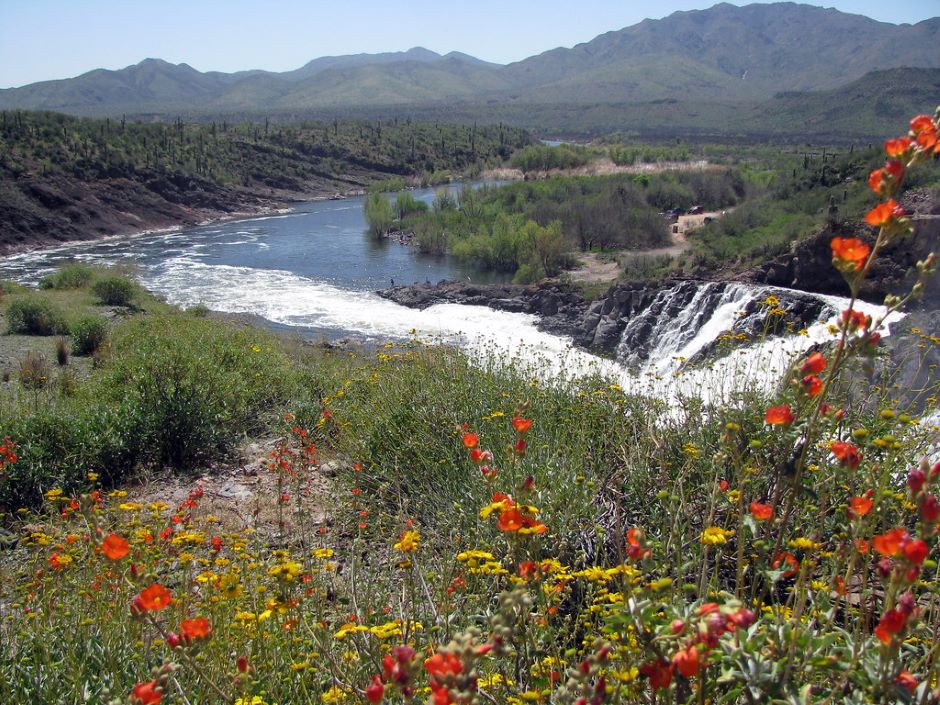Study: Native Desert Fish Don’t Last in Droughts
 Blossoms near the Verde River, Arizona (Andy Atzert, via flickr CC 2.0)
Blossoms near the Verde River, Arizona (Andy Atzert, via flickr CC 2.0)While the desert is known for its dry climate, the biome is also an example of how, when it rains, it pours. The torrential downpour leads to additional water pulsing through streams, impacting desert fish in many ways. While one may think that native desert fish would be able to handle this phenomenon, the variances are too extreme, even for those born and raised there.
According to a study from Arizona State University, fluctuating water levels upset natural ecosystems and native fish aren’t necessarily in the best shape to handle droughts that occur unexpectedly. They looked at fish populations in Arizona’s Upper Verde River and cross-referenced them with streamflow data from U.S. Geological Survey gauges to make the connection.
Non-Native Desert Fish Handle Droughts Better
“We studied discharge characteristics, and had 45 years of hydrology data to look at. For the fish populations, we had 15 years of data, from 1994 to 2008,” said Albert Ruhi, a postdoctoral researcher at Arizona State. “It was interesting to see that those 15 years are more or less representative of a broader hydrological context.”
Since it sits relatively untouched by human construction like dams and hydropower plants, the Upper Verde was chosen. Such natural flow patterns, as Ruhi says, gave scientists a cleaner look at the effects that outlier floods or droughts have on native biodiversity. And fish were really the best proxy for that mark.
All of the fish data was gathered through electrofishing by scientists at the Rocky Mountain Research Station. Then, models were drawn up by extracting seasonal profiles of streamflow for every day of the year from the USGS dataset.
“We were interested in the hydrological anomalies,” said Ruhi. “Studies typically use regulated rivers, but here we were interested in the hydroclimate extremes. We looked at a natural river to assess the natural effects of drought and floods to fish.”
Results
Researchers found that native fish essentially had boom periods when flooding came to the Upper Verde and bust times when drought came. These included species like the desert sucker, Sonora sucker and the roundtail chub. The Sonora and the roundtail are both listed as vulnerable, says Ruhi.
Ruhi and others found that non-native fish experienced very little impact following extreme events.
“We were expecting the opposite responses. But we found that there’s a constant background of non-natives, with some species being present almost always and everywhere,” said Ruhi. “In contrast, the natives appear to be responding to hydrology, and not so much to the presence of their non-native counterparts.”
Implications for the Future
Other studies have found that native desert fish thrive with natural flow patterns, says Ruhi. “In highly variable rivers, a dominance of non-native fishes may be a symptom of an altered hydrology instead of the cause for native decline. Therefore, preserving natural hydrology is important, and may be particularly so for the conservation of native fishes in desert rivers of the American Southwest.”
Other researchers in the U.S have affirmed this research and its findings. A 2021 study conducted in California saw the same trend. Non-native desert fish have a higher resistance to drought conditions and sometimes even see an increase in population. The “why” is still unknown, but both studies serve as a good warning about the dangers of climate change on natural wildlife.



Max
March 15, 2023 at 12:51 pm
Great post, thanks for sharing the insights from the research.